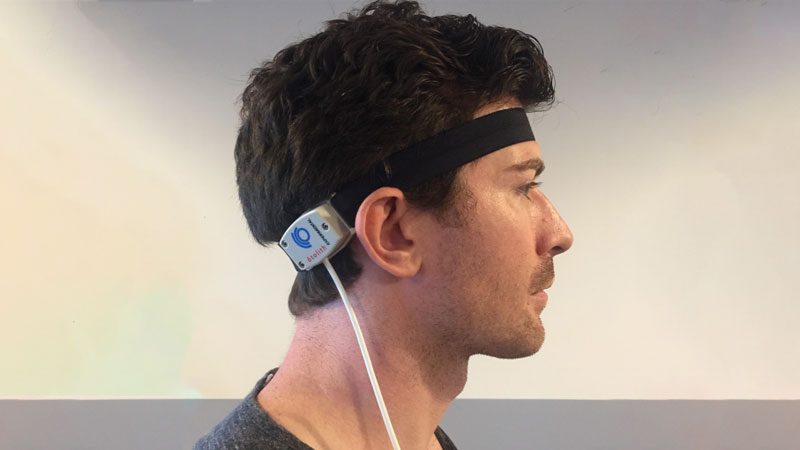
VR Motion Corp. and automotive giant Jaguar Land Rover are both conducting trials a new device which developer Otolith Labs claims could solve the problem of virtual reality motion sickness. The small device, which can be worn on a VR headset headband, transmits a form of white noise to the inner ear, helping it to cope with the occasional disparity found in moving within virtual worlds, while not actually moving in the real world.
VR motion-induced nausea has been a problem for the virtual reality industry since the early days of prototype Oculus headsets. Higher refresh rate screens and motion controllers have done a lot to help our brains come to terms with virtual movements not corresponding to real-world movements — we experience something similar when traveling in cars or planes. But there are those who are still very susceptible to feeling sick after even brief periods of VR. Otolith Labs’ new technology could change that.
Called the OtoTech, the device generates “virtually silent” vibrations which flood the inner ear with a form of white noise, causing the brain to reject its inputs, making for a more comfortable virtual reality experience. As UploadVR points out, this is a different, and arguably far simpler technique, than one leveraged by galvanic vestibular simulator technology, which can send electrical signals that simulate the direction you’re moving.
Although still in the testing stages, OtoTech is currently undergoing trials by VR training supply firm VR Motion. Typically, between 20 and 30 percent of its users experience some form of nausea while in VR, but Otolith claims that its device improves that. The firm has yet to say by how much, however, suggesting that it would want to wait for the device to receive FDA approval before giving any more of an endorsement.
Jaguar Land Rover conducted its own double-blind study using the device and claimed that the results were positive, though it too has yet to release any specific findings to back up these statements.
Otolith reportedly works equally effectively in seated, standing, and roomscale experiences. If and when it receives FDA approval, it could be turned into a consumer product or incorporated into future virtual reality headset designs.
Other attempts to fix motion sickness in VR have met with mixed success, so a blanket solution that works in all use cases would be a welcome addition to the VR accessory marketplace.



